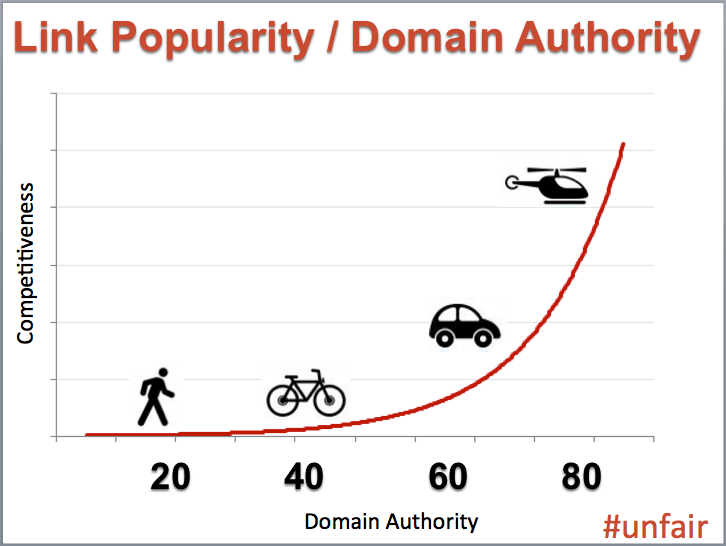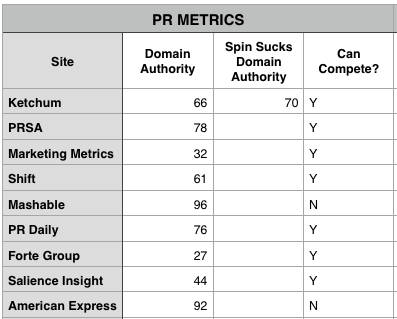Lindsay Bell and I have been working on a project for a client to help her write more efficient headlines.
During a call last week, she asked if we had a checklist of things we do before we publish a piece of content.
Of course we do, we said! (In our heads.)
To help her, we had to take what was in both of our brains and put it on paper.
As we finalized the project, we realized it might be very helpful for you, too.
Write a Compelling Headline
One would think all you have to do to write a compelling headline is add a number, create a “how to,” or drop a famous name.
But it turns out, it is much more work than that, particularly if you want to attract both humans and Google.
You have to be creative (and, yes, there are certain tricks like those listed above that work) and you have to be strategic.
A compelling headline is not to be taken lightly.
Be Creative
First, to create a compelling headline, look at the project with a creative eye—as the potential reader—and try to imagine what would grab them, draw them in, and make them curious to want to not only read more, but share the piece with their social communities.
Think of things, such as:
- “Is it as dull as dry toast?”
- “Does it grab the reader?”
- “Would it make you want to read more?”
- “Can it be controversial in some way?”
- “Will it drive social shares?”
- “Are there creative and/or relevant pop culture references that might work, or catchy turns of phrase that fit the subject matter?”
- “Is the headline making false promises? Does the story match, in other words, and deliver on the promise of the headline?”
Of course, the keyword or phrase must be included, and it’s ideal to place it as close as possible to the start of the headline.
That said, it should never feel forced.
To be a compelling headline, it has to work as a lure, and trying to make something fit where it just doesn’t will work to your detriment when it comes to your audience and other potential readers.
Be Strategic
Once you know if your headline speaks to your audience and entices them to click, you have to be strategic.
You want Google to know you are an expert on said topic.
Therefore, there are four steps you should take with every piece of content you publish.
- Check your topic/headline/keyword/phrase in the Google keyword planner (don’t be scared that it asks you to sign in to your AdSense account…just sign in as if it’s your Gmail). For this exercise, I used “PR metrics.” There are 50 monthly searches and the competition is “medium.” If our site authority was low, I’d choose a different keyword. But, for Spin Sucks, medium competition is doable.
- Do an incognito Google search (go to file/new incognito window in your browser toolbar). This will allow you to see what people outside of your sphere of influence see when they search. I entered “PR metrics” into the search bar.
- Install the moz toolbar (it’s free and is a Chrome extension). Click it on in your toolbar so you can see what the domain authority is of all the sites on the first page of results.
- Create a quick spreadsheet. Add the blog or newssite in the first column, their domain authority in the second, and whether you can compete in the third. Andy Crestodina has a great visual to show you where you should compete in Increase Targeted Website Traffic.

If your site’s domain authority (which you can check either by installing the Moz Chrome extension and pulling up your site or by going to Open Site Explorer) is 45, for instance, you shouldn’t try to compete with any site higher than 60.As he puts it, you can beat a runner running a marathon if you’re riding a bike, but the car driver will beat you every time.Our domain authority is 70, which means we can compete with sites up to 80.
If our competition for “PR metrics” was more than just the two sites, we’d go back to the drawing board and do these four steps all over again. (As it turns out, Spin Sucks comes up on the first page of results for “PR metrics.” These steps work really well!)
When I sat down to write my compelling headline, it could be:
- PR Metrics: You Have to Do Real Math
- The 10 Things to Consider with PR Metrics
- Which PR Metrics to Track Every Week
- What Kim Kardashian Taught Me about PR Metrics
- Your Campaign Will Die if You Don’t Use these PR Metrics Now
As you get used to using this tool, you won’t have to create the spreadsheet.
You’ll just scan the domain authority of the sites listed on the first page of Google results and make a quick decision.
But I do recommend creating the spreadsheet the first few times so you can visually see what you’re up against.
Now it’s your turn. How do you write a compelling headline that both humans and Google will love?
photo credit: Shutterstock
